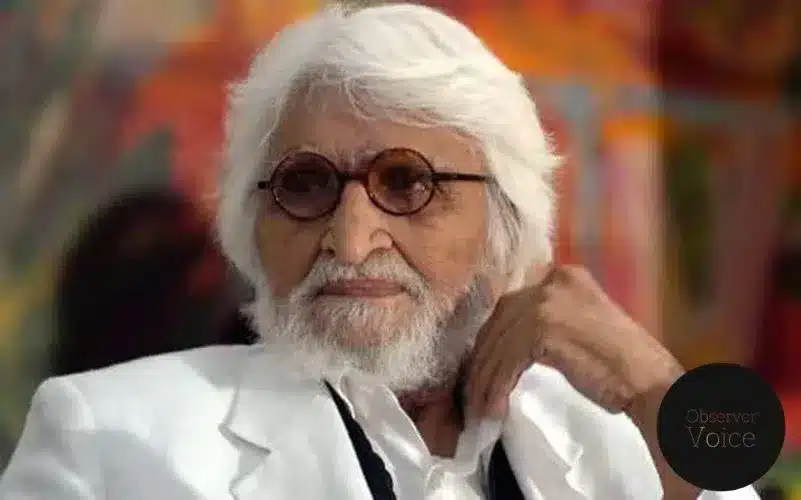M F Husain (17 September 1915 – 9 June 2011) was an Indian artist, known all over the world for his amazing paintings that he created during his lifetime.
Early Life
M F Husain was born on 17 September 1915, in Mumbai, India. He studied at the Sir Jamsetjee Jeejebhoy School of Art in Mumbai.
Career
In the beginning, M. F. Husain painted movie hoardings. By the early 1930s, Hindi cinema was booming, with 200 films per year, and the ad industry was desperate for top quality painters. Husain used this chance to make some money. Also, he started working for a toy company, where he designed some cool toys.
MF Husain and his friends from the Sir J. J. School of Art wanted to break the age-old Bengal school of art tradition. They knew that if Indian art was going to be taken seriously, artists had to embrace modernism. In 1947, Husain saw the partition of India and Pakistan as an opportunity to start a movement. In 1947, Husain and his friends started The Progressive Artists’ Group by declaring that there was a ‘new India’ born out of the partition. Soon, the movement gained recognition and the group got stronger, which ultimately changed Indian art forever.
In 1952, he had his first solo show in Zürich. In 1964, he had his first U.S. exhibition at India House in New York City.
In 1971, Husain and Pablo Picasso were both invited at the Sao Paulo Biennial, Brazil. He was also nominated to the Rajya Sabha in 1986.
Hussain made his film debut in 1967 with the movie ‘Through the Eyes of a Painter’. In addition to winning the Golden Bear short film award, the film screened at the prestigious Berlin International Film Festival.
He made a cameo in the 1997 film ‘Mohabbat’, in which Madhuri Dixit played the lead. In the film, Madhuri played an artist and Husain contributed the art. He made a movie titled ‘Gaja Gamini’ in 2000.
In 2004, he made a film called Meenaxi: A Tale of Three Cities, with actress Tabu in the lead role.
Awards
In 1955, he was awarded with the Padma Shri, the fourth highest civilian award of India.
In 1973 and 1991, he received the Padma Bhushan and the Padma Vibhushan, the third and second highest civilian award of India respectively.
Death
He died on 9 June 2011 in London, England.

